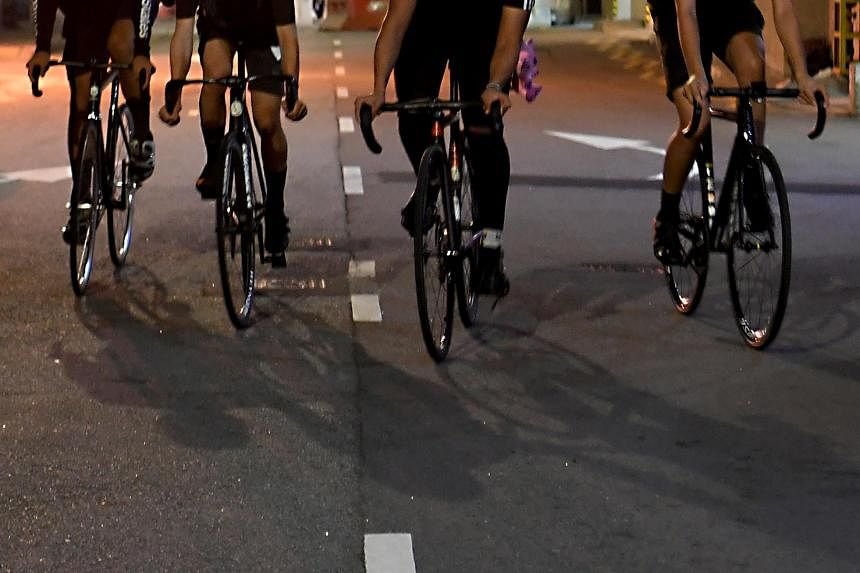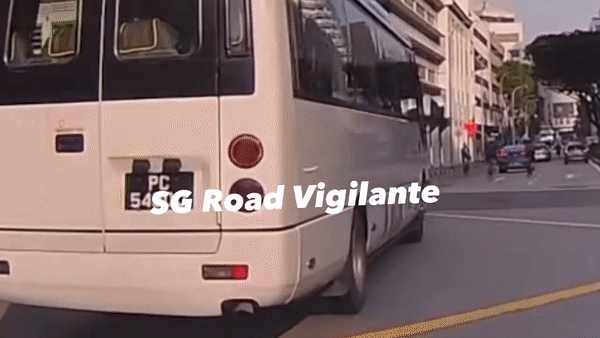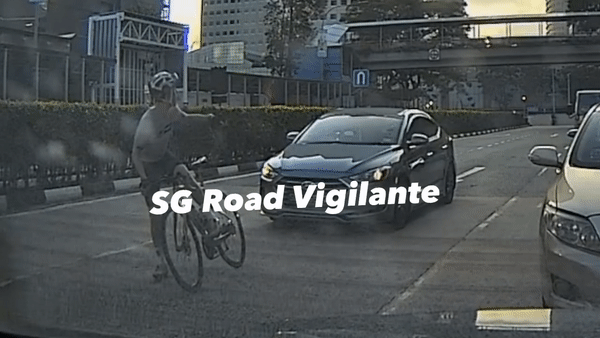- Joined
- Jul 25, 2008
- Messages
- 13,603
- Points
- 113
473 cases of brakeless bikes caught by LTA since handbrake rule took effect in 2021

The regulation affects fixed-gear bicycles, also known as “fixies”, which do not usually come with handbrakes. PHOTO: ST FILE
Esther Loi
August 7, 2023
SINGAPORE - There were 473 instances of people riding a bicycle without a working handbrake since regulations banning the use of such bicycles on public paths and roads here took effect in September 2021.
Nobody was brought to court, but The Straits Times understands that a small number of them were issued composition sums.
In the first six months of 2023, LTA detected 102 cases of people riding brakeless bikes on public paths, and 223 cases in 2022. In 2021, there were 148 offences from September, when the Government implemented a rule requiring all bicycles on public paths and roads to have at least one working handbrake.
LTA said its active mobility enforcement officers will seize such bikes when they are spotted on public paths, and owners need to pay a fee to retrieve their bicycle. The fee is separate from the composition sum.
LTA did not reveal how much the composition sums and retrieval fees were.
During the retrieval process, LTA will remind owners to install handbrakes on their bike before riding it on public paths.
First-time offenders caught riding a bike without brakes on public paths can be fined up to $10,000 or jailed for up to six months, or both.
Those caught doing so on public roads for the first time can be fined up to $1,000 or put behind bars for up to three months, or both.
The regulation affects fixed-gear bicycles, also known as “fixies”, which do not usually come with handbrakes and require a rider’s pedal resistance to slow down and stop.
It kicked in after a fatal accident in 2020 prompted safety concerns over the use of brakeless bikes.
In January that year, a 13-year-old girl fell to her death after crashing into a railing while riding a brakeless fixie bike at a multi-storey carpark.
Some still riding without brakes
Some cyclists who spoke to ST are still riding their brakeless fixies on public paths.Software engineer Richard (not his real name) said his fixie bike’s “aesthetics are nicer” without handbrakes. The 24-year-old has not encountered enforcement officers thus far.
Describing the rule as a “knee-jerk reaction” to the 2020 death, he said bike safety could be improved by building cycling paths separate from roads and pedestrian pavements.
There could also be more initiatives to raise awareness of bike safety among new riders, he suggested.
Avid fixie rider Jason (not his real name), 47, eventually installed a handbrake on his bike six months after the rule kicked in.
He was initially hesitant to do so, as the brake wire would get in the way of a stunt he performed that involved lifting the front wheel off the ground while spinning the handlebar 360 degrees.
Other fixie fans readily complied with the rule.
Student Zavier Lim, 18, who posts videos of his fixie tricks on TikTok, said the addition of a handbrake on his bike has not affected his riding experience and he can still do most tricks.
“There’s no point (resisting it)... You either install a handbrake, or you don’t cycle at all,” he said.
For him, the handbrake is a safety precaution to be activated only in emergencies. Otherwise, he said he slows his bike by pedalling backwards.
He acknowledged handbrakes would be useful for novice riders who are less skilled and unable to control their bikes.
Bank courier Mohd Lutfi Fuadi, 37, also had no qualms about installing a handbrake so that he could continue riding his fixie bike without being stopped by LTA officers. “Time is money” in his line of work.
He has been riding a fixie bike for a decade, and to him, “a brake is just a brake”.
Mr Lutfi said some young people, though, may think otherwise, claiming handbrakes undermine the “pureness” of the fixie bike culture.
These youth, he added, take pride in controlling their bikes entirely through continuous pedalling.
Bike dealers told ST there has been a significant decline in fixie bike sales since the rule was imposed.
Many dealers are now also selling these bikes with handbrakes already installed.
At retailer Fishtail Cyclery, founder Roy Tan said there has been a 20 to 30 per cent drop in demand for fixie bikes since September 2021.
The new regulation aside, Mr Tan said the lower sales could be attributed to other factors, such as the increase in international travel, which has diverted people’s interest from cycling in Singapore.
“Most fixie bike riders have just... installed brakes in order to carry on with life. It also no longer comes as a surprise to people who purchase new bikes,” he said.
Mr Wayne Ong, co-founder of home-based bike business NiceBikes.co, said a large majority of his customers have switched to riding road bikes after the new regulation took effect. His main clientele is no longer fixie bike riders.
It is a similar picture at Ascent Bikes, where fixie-related sales nosedived after many riders stopped using the bikes because the brakes would “break the aesthetics and ethos” of riding fixies, said founder Yee Qing Xiang.
LTA said it has reached out to cycling interest groups, schools such as institutes of higher learning, and bike retailers to raise awareness of the handbrake regulation.





















